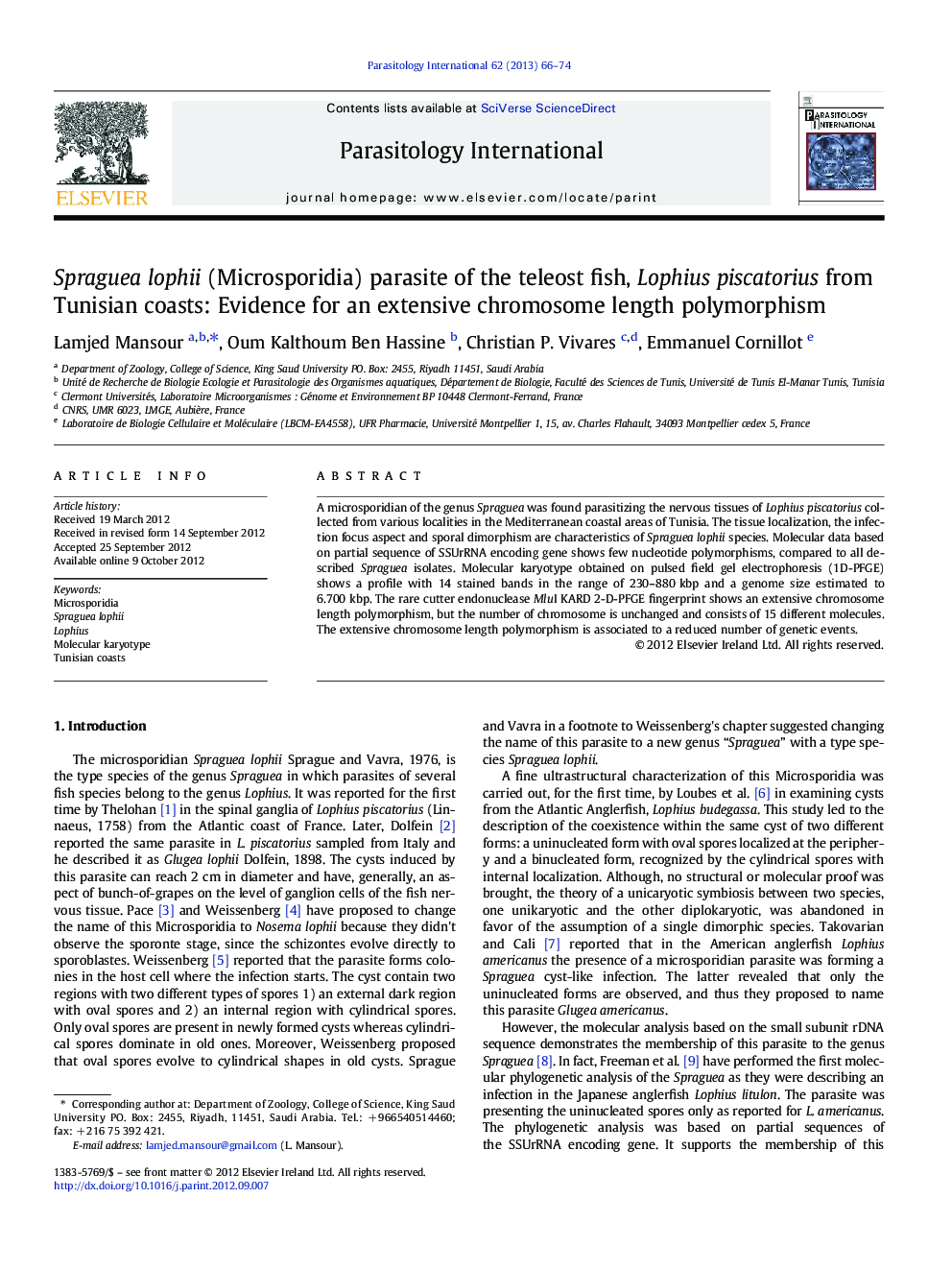| Article ID | Journal | Published Year | Pages | File Type |
|---|---|---|---|---|
| 3417874 | Parasitology International | 2013 | 9 Pages |
A microsporidian of the genus Spraguea was found parasitizing the nervous tissues of Lophius piscatorius collected from various localities in the Mediterranean coastal areas of Tunisia. The tissue localization, the infection focus aspect and sporal dimorphism are characteristics of Spraguea lophii species. Molecular data based on partial sequence of SSUrRNA encoding gene shows few nucleotide polymorphisms, compared to all described Spraguea isolates. Molecular karyotype obtained on pulsed field gel electrophoresis (1D-PFGE) shows a profile with 14 stained bands in the range of 230–880 kbp and a genome size estimated to 6.700 kbp. The rare cutter endonuclease MluI KARD 2-D-PFGE fingerprint shows an extensive chromosome length polymorphism, but the number of chromosome is unchanged and consists of 15 different molecules. The extensive chromosome length polymorphism is associated to a reduced number of genetic events.
Graphical abstractRestriction MluI KARD 2D-PFGE profile of the whole genome of the Tunisian isolate Spraguea lophii. We observe a slight shift between C07 and C09 restriction fragments (arrows).Figure optionsDownload full-size imageDownload as PowerPoint slideHighlights► We characterize a microsporidian parasite in Lophius piscatorius from Tunisian coasts. ► We compare the Mediterranean and Atlantic populations of Spraguea lophii. ► KARD 2D pulsed field gel electrophoresis offers a higher resolution of the genome. ► The extensive CLP is associated to a reduced number of genetic events. ► The most frequent polymorphism is insertion/deletion.
